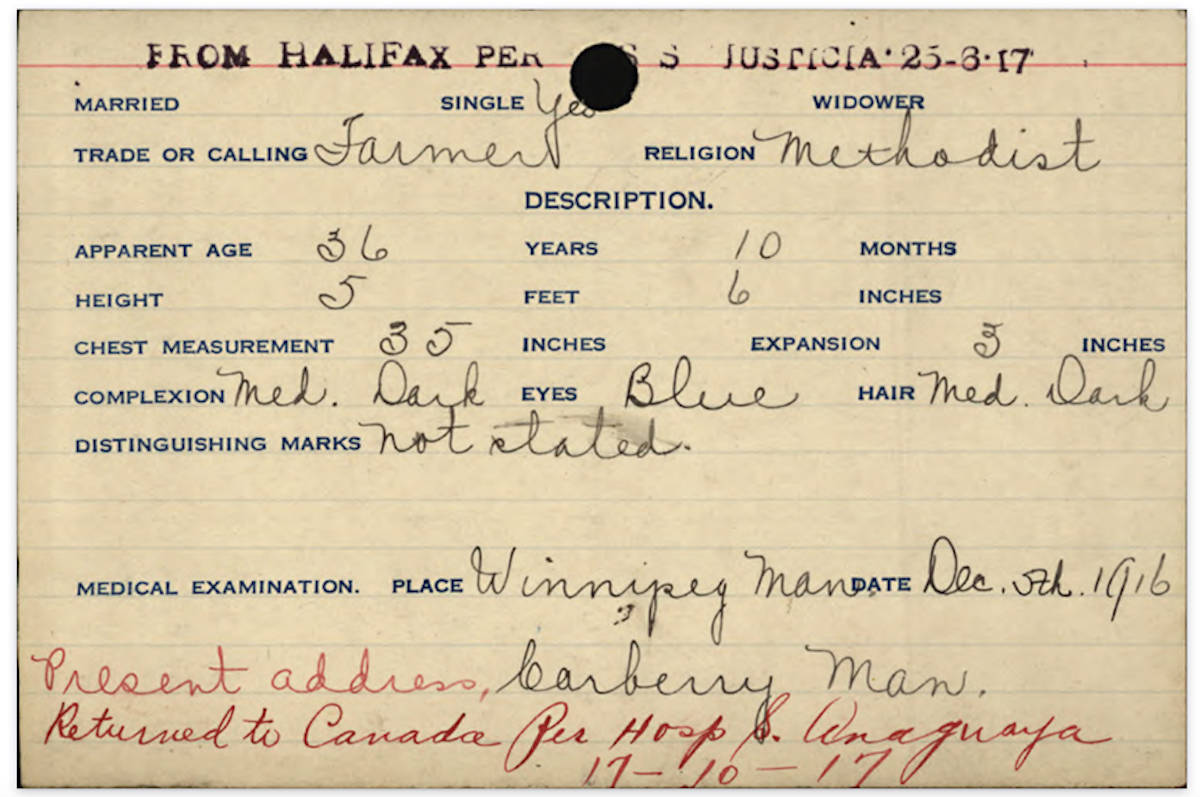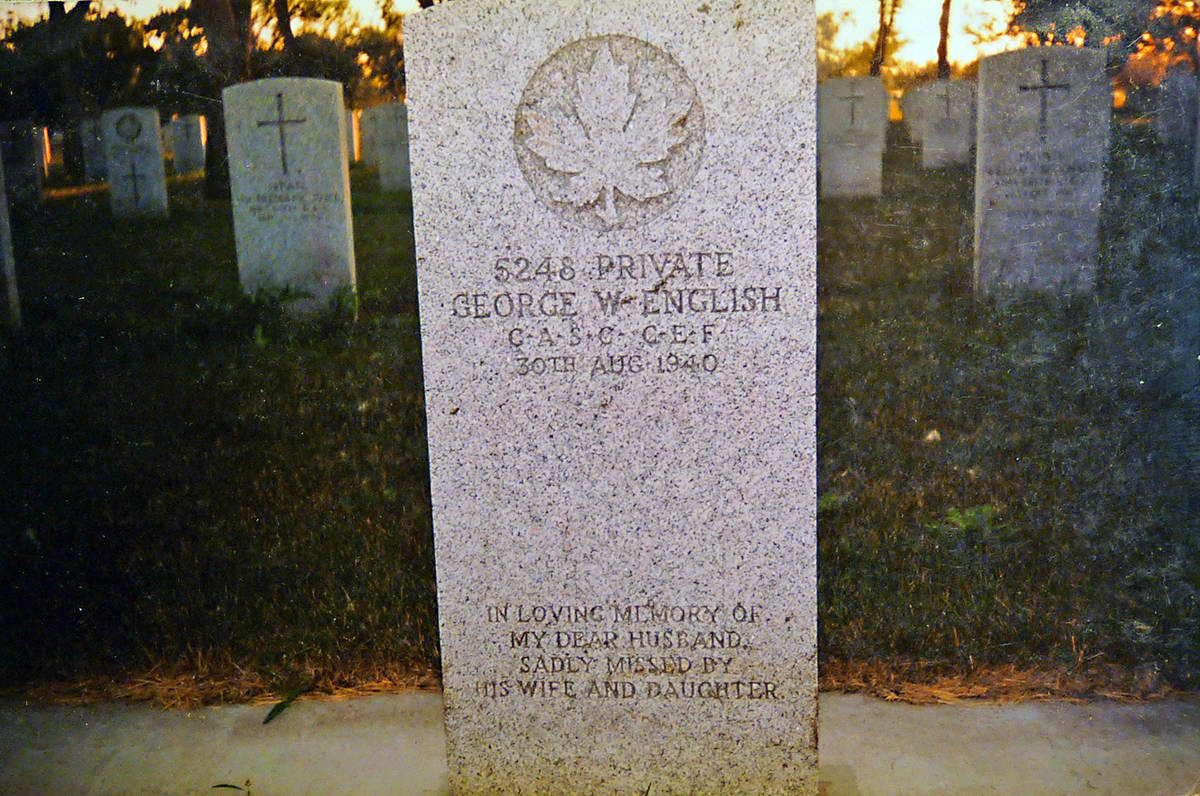Every year about this time, Shirley Oakes thinks about her father.
Now a resident of Langley, Oakes was a year-and-a-half when George English died, a veteran of the First World War who passed away during the Second.
For many years, every time Remembrance Day drew close, she would look at the Legion members selling poppies and she would wonder.
Was he wounded in combat during the First World War? Had he re-enlisted to fight in the Second?
She didn’t know, and her mother didn’t like to talk about it.
There was a military pension, Oakes knew, and her father was laid to rest in a veterans cemetery in Winnipeg, but beyond those bare facts, there was little more, until recently, when Oakes was able to obtain her father’s detailed military record.
The documents show that English was not one of the veterans who were wounded in battle, but a member of the much larger group of soldiers who were ravaged by the many diseases raging in Europe at a time before modern medicine.
The documents from Veterans Affairs Canada show that a just few weeks after he arrived in Britain, Private English was shovelling coal when he got soaked (presumably by rain) and came down with a sore throat.
It turned out to be diphtheria, a potentiually fatal bacterial infection of the nose and throat that can, without modern antibiotics, damage a patients’s heart, kidneys and nervous system.
English had arrived in England in May of 1917.
By June, he was in hospital.
“He was in bed two weeks and hospital two months: he was then allowed to go out for exercise,” the doctor’s report states.
“Patient felt weak and did not gain weight (had) no strength (and) was short of breath on exertion.”
By October, English was discharged as medically unfit and put on a boat back to Canada for a long stay at a veterans convalescent home.
In the Veterans Affairs archive documents, English is described as a 5’6,” fair-complexioned, dark-haired, blue-eyed man weighing about 130 lbs., a Methodist whose occupation was given as “farmer.”
“General appearance very poor: has very dry skin and great deal of puffiness below the eyes: very slow and dull…” one medical report states.
“Patient looks much older than his supposed age (38).”
The prescribed treatment of his bacterial infection was listed as “… diet, general (tonics) and blood tonics.”
English was discharged as an invalid in 1920.
A medical board rated his degree of incapacity at 60 per cent, all of it due to his military service.
Under “probable duration of incapacity” the form read “indefinite.”
Oakes said she and her mother had a tough go of it after her father died in 1940.
It was not an era when people would rent to a single woman with a child, even the widow of a war veteran, and because of it, Oakes had to be “boarded out” for a period of time, living with another family.
Her father’s pension wasn’t transferred to her mother until the end of the war, when it arrived in a lump sum and helped her mother pay for a small farm in B.C., where she was able to raise her daughter.
It was good to learn the details of her father’s military service, Oakes said, but it was also disappointing.
“I don’t even have a photo of him,” she said.
“I was hoping there might be one (in the archives).”
She does have a photo of his final resting place.
It shows a headstone for “5248 (his regimental number) Private George W. English” and states “in loving memory of my dear husband, sadly missed by his wife and daughter.”
Oakes said her mother Pauline never remarried.
“She said she had the best man.”
READ MORE: Remembering Sgt. Jesse Wright
By the time the Great War ended on November 11, 1918, the date that would become Remembrance Day, 60,661 Canadians had died, and 172,000 had been wounded in the fighting, more than half of the 425,000 who went overseas to fight.
But even more had taken ill.
“The total number of cases receiving hospital treatment up to August 31, 1919, was 539,690 of which 144,606 were battle casualties and 395,084 of disease” notes the Official History of the Canadian Forces in the Great War; The Medical Services, by Sir Andrew McPhail.
English was one of 1701 members of the Canadian forces who were diagnosed with diphtheria and 18 died from the disease.
The war ended with a raging influenza epidemic that killed an estimated 50,000 Canadians, one that was spread in part by infected soldiers returning from overseas.
READ MORE: Fort Langley ceremony honours fallen on Nov. 11
READ MORE: Murrayville better prepared to host second Remembrance Day ceremony
READ MORE: Aldergrove will pause to Remember
dan.ferguson@langleytimes.com
Like us on Facebook and follow us on Twitter


